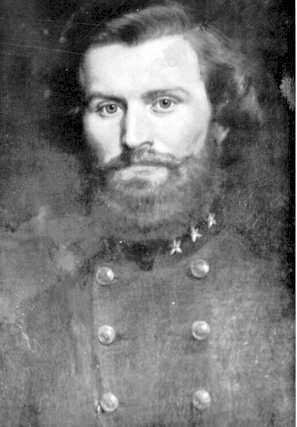|
Randal McGavock:
Harvard Graduate by Rebecca Blackwell Drake
McGavock was a graduate of the University of Nashville and later the Harvard School of Law. In 1858, soon after returning from Harvard, he was elected Mayor of Nashville. McGavock's life and career had just begun to prosper when he opted to join the Confederate Army. In spite of the protest from his family and his new bride, Seraphine Deery, he told them all good-bye and promised to return as soon as the war was ended. On the morning of May 12, Colonel McGavock and his men found themselves riding through the town of Raymond, Mississippi. Captain Pat Griffin, one of the men in McGavock's regiment who survived the Battle of Raymond, later recorded the scene. "Tired after ten days of marching over dusty roads in scorching sunshine and deserving a respite from fatigue, the Tenth Tennessee camped on the east side of Raymond on the night of May 11. On the following morning, between eight and nine-o'clock, the hungry men marched through the town and were met by the grateful citizens with food, water and loud cheering. At the head of the regiment rode Colonel McGavock in a gray coat with scarlet lining, his saber belt at his left side. He sat the horse well even though the stirrup straps were too short for his gangly, boyish legs. As the ladies of Raymond waved their handkerchiefs the thirty-six-year-old colonel acknowledged their salutes with a smile and a nod; the children would remember the gray-blue eyes that winked from behind the heavy auburn beard. In a few minutes the Irish regiment from Tennessee had won the admiration of the dusty little town of Raymond. Then, at 9:30 they marched to the outskirts and turned southeast down the Gallatin Road." While on the outskirts of Raymond near the Gallatin Road, the Confederate Army paused to prepare daily rations. Quartermaster Simpson placed an entry in his diary saying, "The birds are singing, the sun is shining & everything looks gay. We are ready for the fight or the march." Unfortunately, instead of the march, the action turned out to be a battle. Official Civil War Records, Series I, recalls the minutes before the Battle of Raymond citing, "General Gregg ordered his men to leave the Gallatin Road and proceed for about half a mile through the woods lying between the Gallatin and Utica Roads. As soon as the enemy was sighted in the woods opposite, across a large open field, the companies were immediately formed in the line of battle. There they waited and heard the opening fire of the artillery." An official report written by Colonel J. J. Turner, 30th Tennessee, recorded the action that followed: "While thus posted, the artillery was still engaged, and I could distinctly hear the commands of the Federal officers, some 400 yards to our left in the direction of the Gallatin Road. After remaining there for some fifteen minutes, we were ordered to move to the left about 600 yards, which we did at double quick, we then formed in line in the edge of a dense woods, a large field being in the rear. I ordered forward a company of skirmishers in our front, and immediately I heard the engagement open between the enemy and the Third Tennessee and Seventh Texas. "At this juncture we received an order leaving it discretionary whether to attack the enemy or not. After waiting a few minutes the skirmishers were withdrawn, and we moved rapidly by the right flank for about 500 yards, and reached a position near that of the Third Tennessee, and after seven of the consolidated companies had filed into the field, the whole command changed direction by the left flank and moved forward rapidly in line. As soon as those in the field reached the crest of the hill, the enemy opened upon us from the front and right, and Colonel McGavock ordered a charge, which was responded to with alacrity by all the command." Colonel McGavock sat erect on his horse as he led the charge toward the enemy. His long coat swung loose over his left arm and he held a saber in his right hand. His bright red hair and beard were highlighted by sunshine - making him a sure magnet for enemy fire. There were no crowds cheering him on to victory. At first he heard screams, gun fire and horse's hoofs. Then, the only sound he heard was the rustling of angel wings. *Historical information from Pen and Sword, The Life and Journals of Randal McGavock, edited by Herschel Gower. Printed in 1960 by McConway-Mercer Press, Jackson, Tn. Click here to view Jerry McWilliams' portrait of Randal McGavock © 1998-2006 all rights reserved |
 The morning of
May 12, 1863, a tall redheaded Confederate soldier from Nashville,
Tennessee, marched with his Irish regiment through the town of Raymond.
His name was Lt. Colonel Randal McGavock and he was not just an ordinary
soldier. McGavock was highly educated and from one of the wealthiest and
most prominent families in the city of Nashville.
The morning of
May 12, 1863, a tall redheaded Confederate soldier from Nashville,
Tennessee, marched with his Irish regiment through the town of Raymond.
His name was Lt. Colonel Randal McGavock and he was not just an ordinary
soldier. McGavock was highly educated and from one of the wealthiest and
most prominent families in the city of Nashville.